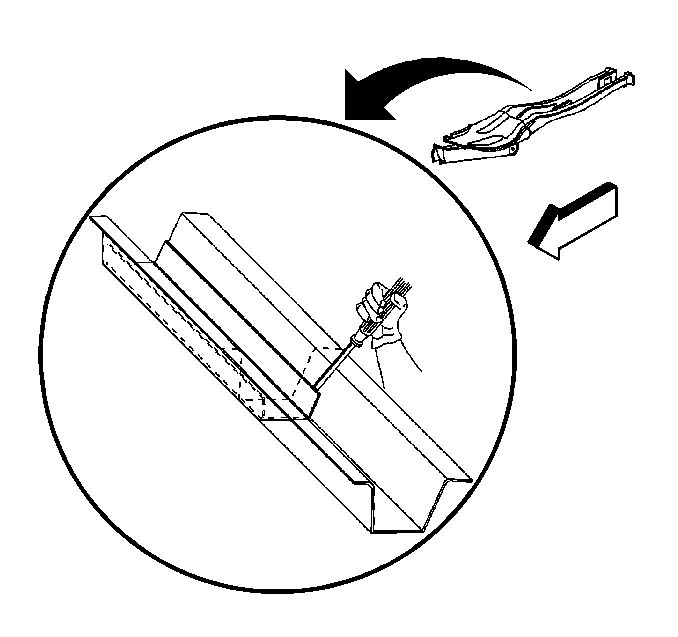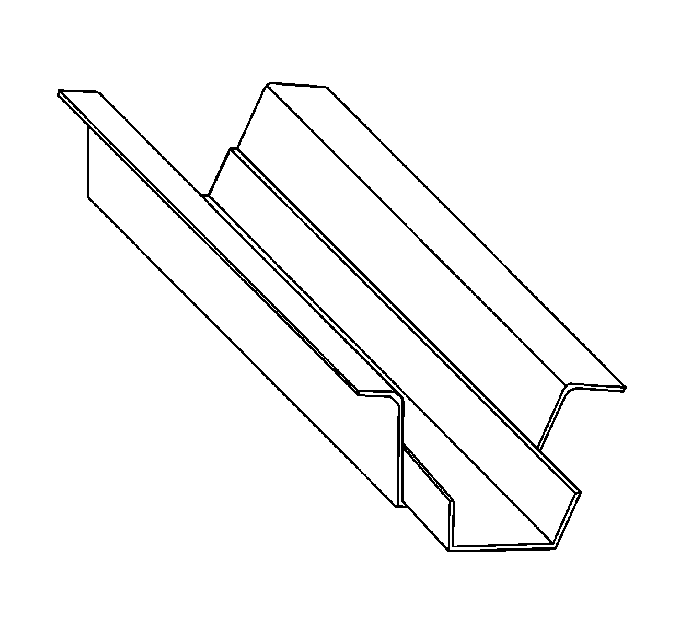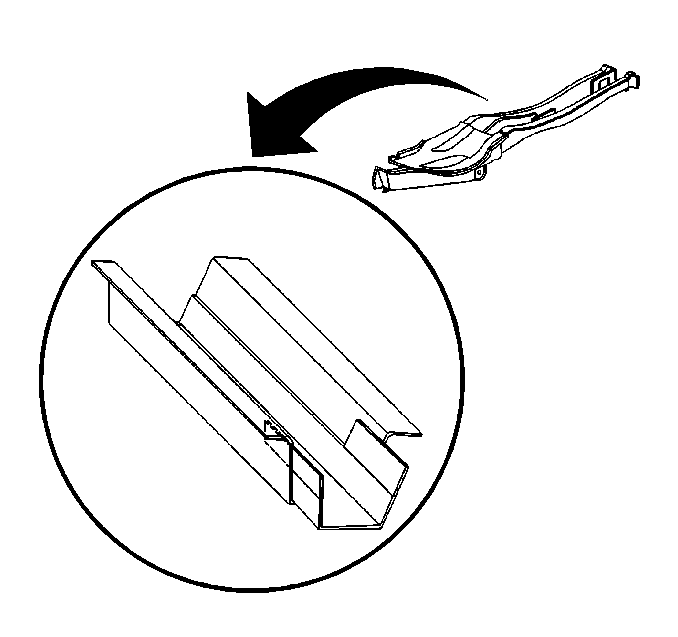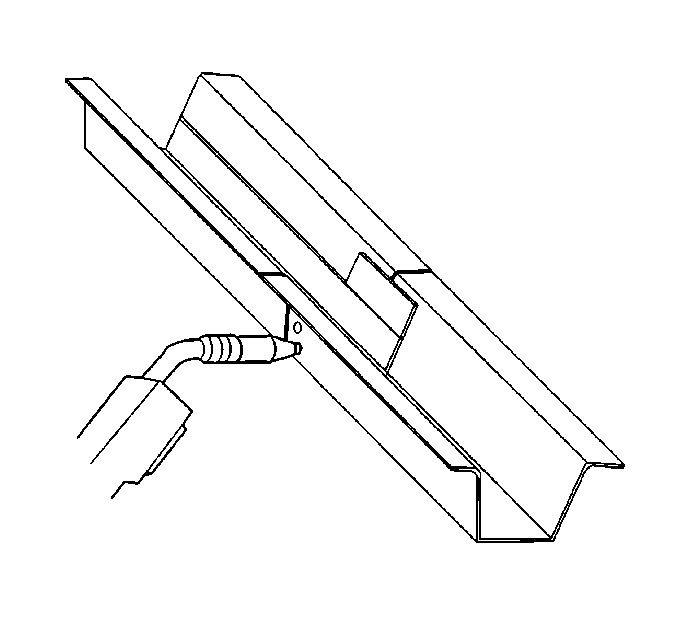Removal Procedure
- Remove all related panels and components.
- Visually inspect and restore as much of the damage as possible to factory specifications.
- Remove the following as necessary:
- Align the appropriate template on the damaged lower rail.
- Use a center punch or an awl to mark the rail by punching through the template.
- Remove the templates and connect the dots with a straight edge and scribe the cut line.
- Locate, mark and drill out the factory welds securing the rear rail inner reinforcement to the outer panel rearward of the marked cut lines.
- Separate the side walls of the inner reinforcement from the outer panel of the rail by slightly prying the reinforcement inward.
- Cut the sides of the outer panel along the marked line. Take care not to damage the inner reinforcement.
- Cut along the bottom of the outer panel approximately ¾ of the metal thickness deep.
- Bend the rail up and down until the outer panel breaks along the partial cut.
- Remove the damaged section of the rear rail.
- Leave the reinforcement extending from inside the remaining rail section.
| • | Sealers |
| • | Sound deadeners |
| • | Anti-corrosion materials |
Important: Sectioning templates are available for both the left and right rails. There is one template for each rail. Use the correct template when marking cut lines. If damage exceeds the recommended area for sectioning and the rail cannot be straightened, the complete rail must be replaced.
Important: Do not drill through the inner reinforcement.

Important: Do not cut the inner reinforcement. This reinforcement will act as a backing plate when welding the new rail section in place.

Installation Procedure
- Align the appropriate template on the service part and mark cut lines.
- Cut the service part and discard the unused section.
- Locate, mark and drill out the factory welds securing the remaining piece of the rear rail inner reinforcement to the outer panel of the service part.
- To section the right rail, backing plates must be installed on either side of the original rail above the inner reinforcement
- Cut two 50 mm (2 in) x 30 mm (1 3/16 in) plates from the inner reinforcement of the service part.
- Drill holes above the inner reinforcement on the original rail.
- Plug weld the backing plates so that 25 mm (1 in) extends beyond the end of the rail section.
- Prepare mating surfaces and position the service part, allow it to slide over the inner reinforcement extending from the original rail section.
- Check fit to ensure proper fit. Use three-dimensional measuring equipment
- Plug weld accordingly.
- Stitch weld along the entire joint.
- Make 25 mm (1 in) welds along the seam with 25 mm (1 in) gaps between.
- Go back and complete the stitch weld. This will create a solid joint with minimal heat distortion.
- Clean and prepare welded surfaces.
- Prime with two-part catalyzed primer.
- Apply sealers and anti-corrosion materials as necessary.
- Install all related panels and components.


Important: Make sure to plug weld the inner reinforcement to the new rail section. This may require drawing the reinforcement or plate flat against the rail. Use a screw to temporarily secure the joint for welding. To ensure a secure weld, sectioning joints should have a gap of approximately 1 ½ times the thickness of the metal. Trim the parts as necessary to achieve this.
Important: Prior to refinishing, refer to GM 4901MD-99 Refinish Manual for recommended products. Do not combine paint systems. Refer to paint manufacturer's recommendations.
Important: Rear trailing arm and bumper mounting holes must be properly located and drilled.
